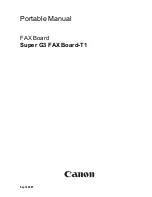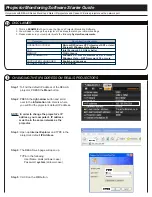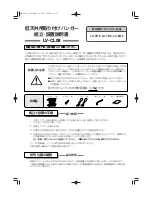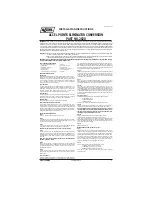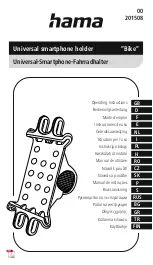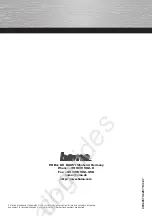
MIO-R290GM2011 Rev E
G&B Specialties Inc. 535 West 3
rd
Street, Berwick, PA, USA Tel: (570) 752-5901 Fax: (570) 752-6397
US Field Service: 570-441-6988; CAN Field Service 570-854-0482; www.rafna.com
-91-
O
PERATION OF
R
EAR
R
AILGEAR
R
OD
L
OCK
K
IT
The rear railgear rod lock is designed to automatically lock when the railgear unit is raised to the
road position. It is important to ensure the rod lock is adjusted properly and in good working
condition. It is also important that the rod is free from any vehicle obstruction that would hinder
movement and/or operation.
Placing the Vehicle on Rail – To Lower the Railgear:
1.
Disengage the lock pin by pulling on the upper push rod knob. Do not force. If the lock pin
cannot be disengaged, raise the railgear slightly.
2.
Hold the push rod in the disengaged position.
3.
Lower the railgear and release the rod once the railgear has rotated past the road locked
position.
4.
As the railgear is being deployed, it will start taking some of the vehicle’s load. (If this is not
the case, DO NOT use the railgear. Inspect the railgear for lubrication and damage.)
5.
Continue lowering the railgear until the hydraulic cylinder is fully extended and the lock pin
re-engages in the rail position. Some railgear models have a lock cam converter installed to
prevent the lock pin from engaging in the rail position; they have a hydraulic lock instead.
6.
Ensure that the railgear is fully deployed and 2-3° over-center before proceeding.
7.
Removing the Vehicle from Rail – To Raise the Railgear:
8.
Disengage the lock pin by pulling on upper push rod knob. Do not force. If the lock pin cannot
be disengaged, lower the railgear slightly. (Some railgear models have a lock cam converter
installed to prevent the lock pin from engaging in the rail position in which case the lock pin
does not need to be disengaged.)
9.
Raise the railgear and release the rod once the railgear has rotated past the rail locked
position.
10.
Continue raising the railgear until the lock pin clicks into the road locked position. The
hydraulic cylinder should be completely retracted.































